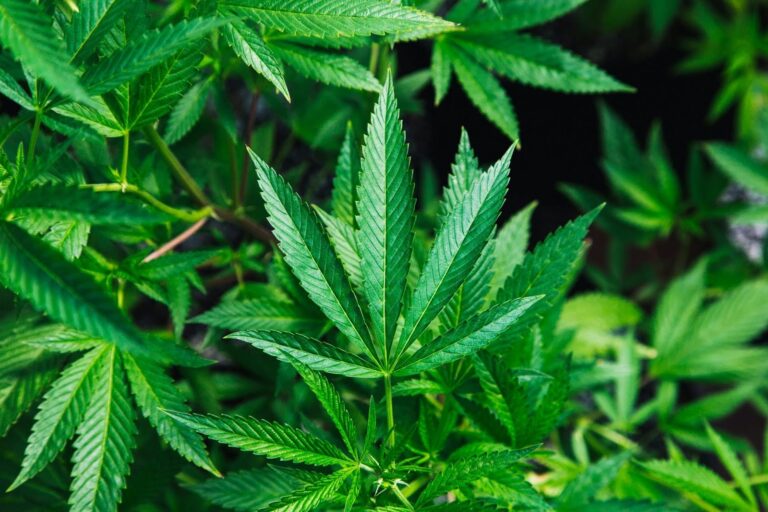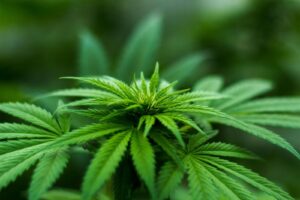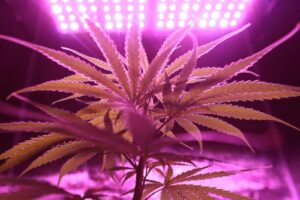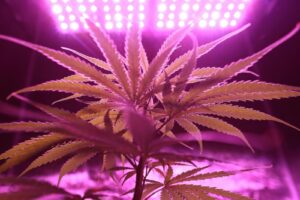Have you ever sat there wondering why your plants fail to thrive despite adequate watering and satisfactory lighting? Usually, growers overlook the key factor known as vapor pressure deficit or VPD. It is the key to unlocking ultimate plant growth.
VPD mainly concerns how plants perspire, absorb nutrients, and finally thrive. It is a very important link between the environment and plants’ needs. When VPD is not factored in, the effects are usually subtle initially.
Leaves may not appear healthy, growth rates slow, or mysterious signs of stress might be noticed even under ideal lighting and watering conditions. Over time, these issues snowball, leaving your plants far from their potential. Understanding this concept and learning to manage it could transform your gardening results entirely.
This guide simplifies the science behind VPD, explains how it impacts plant health, and provides practical tools and actionable steps for measuring and managing it effectively.
Understanding Vapor Pressure Deficit (VPD)
VPD is the vapor pressure in the air minus the saturation vapor pressure. It measures how much moisture the air can hold at its saturation points instead of humidity. Think of it as the driving force for plant transpiration: how plants release water through their leaves. This process means your plants stay hydrated, absorb nutrients effectively, and maintain healthy growth cycles.
Why Is VPD So Important?
VPD directly impacts several critical aspects of plant health:
- Plant Growth: VPD affects the plants’ water and nutrient uptake efficiency from the roots. With balanced VPD, the plant can absorb everything needed for strong growth, with stronger stems, healthier leaves, and rapid development.
- Disease Resistance: Adequate VPD levels lower the chances of fungal diseases like mold and mildew, favored by high humidity or stagnation. A well-kept VPD also helps eliminate bacterial infections by minimizing conditions that may lead to their proliferation.
- Stress Management: VPD helps manage stress by balancing water loss and nutrient uptake. High VPD causes stress and wilting, while low VPD weakens the plant by limiting nutrient absorption. Maintaining the ideal VPD supports better stress management.
- Energy Efficiency: Properly maintained VPD will help your plants effectively utilize their water and nutrient requirements, minimizing waste while keeping pressure on your system low. Sustainable growth over time will, therefore, lead to improved yields.
- Respiratory Optimization: VPD indirectly influences stomatal behavior, hence gas exchange. This means the plant can breathe in carbon dioxide for photosynthesis and exhale oxygen. Proper VPD creates optimal respiration and photosynthesis, which is vital for the health and productivity of the plant as a whole.
- Balancing VPD and Transpiration: High VPD increases the rate of transpiration. However, it requires more from your plants—sometimes too much. Low VPD slows down the rate of transpiration, leaving your plants underperforming. The delicate balance of VPD and transpiration is the first step toward healthy and productive plants.
So, what are the components needed to calculate VPD in your cannabis plant? Let us understand.
Components Needed for Cannabis VPD Calculation
To calculate VPD accurately, we require three primary measurements, along with some additional considerations for the best results:
1. Air Temperature:
This is the base for the computation of saturation vapor pressure. Use a good thermometer for accurate measurements. The accuracy of air temperature measurements is critical because this is the base for the rest of the computation. Minor deviations here may have a major consequence in the determination of VPD.
2. Leaf Temperature:
Leaves often have different temperatures than the surrounding air due to transpiration, which makes measuring their temperature necessary. These temperature differences help determine the plant’s VPD, as cooler leaves indicate higher rates of transpiration. Understanding these temperature profiles is crucial for assessing the plant’s water loss, nutrient uptake, and overall stress management.
3. Relative Humidity (RH):
Relative humidity (RH) determines the actual moisture content in the air, which is vital for balancing the plant’s water loss with the air’s moisture levels. Monitoring RH helps understand the moisture conditions in the environment, ensuring plants don’t lose too much water or struggle to absorb it, supporting healthy growth.
Are you tracking the key factors driving your cannabis yield? With PlanaCan, you can monitor RH in real time, balancing plant water loss and air saturation while documenting each process step. This will allow you to refine your methods, make informed decisions, and boost your yields and profits.
So, how do you calculate the air and leaf VPD for your cannabis yield? Let us understand.
Steps to Calculate Air and Leaf VPD
Calculating air and leaf VPD is easy once you understand the variables involved. These calculations help you assess the vapor pressure deficit at the air level and the leaf surface, offering critical insights into how plants interact with their environment.
These steps will help you determine optimal plant health and growth conditions while improving efficiency.
1. Calculating Saturation Vapor Pressure (SVP)
To calculate VPD, you first need the Saturation Vapor Pressure (SVP). It is determined by temperature and represents the maximum moisture the air can hold. Use the formula:
SVP (kPa) = 0.6108 × exp[(17.27 × Temperature) / (Temperature + 237.3)]
Here, temperature can refer to air or leaf temperature, depending on whether you’re calculating Air VPD or Leaf VPD. For accurate results:
- Use a calibrated thermometer to measure air temperature.
- When calculating for leaves, use an infrared (IR) thermometer for precise readings.
- Double-check your temperature measurements to ensure they reflect the current conditions.
Tip: Record daily values in similar environmental conditions to ensure consistent measurement practices. Small temperature fluctuations can lead to significant differences in calculated SVP.
2. Formula for Calculating Air VPD
Once you have the SVP, use this formula to calculate Air VPD:
Air VPD (kPa) = SVP × (1 – RH/100)
This formula subtracts the actual moisture in the air from its saturation point, giving you the deficit. For best results:
- Measure relative humidity (RH) using a high-quality hygrometer.
- Take readings at consistent times to avoid variations due to environmental fluctuations.
- Use averaged values if working in larger spaces to account for uneven conditions.
Tip: Maintain a log of RH trends throughout the day to identify periods of fluctuation and their potential effects on Air VPD.
3. Differences Between Air VPD and Leaf VPD
Leaf VPD considers the temperature of the leaf surface rather than the surrounding air. Since leaves often run slightly cooler due to transpiration, their VPD calculation gives a more accurate picture of plant stress. For precise Leaf VPD calculation:
- Measure leaf temperature directly with an IR thermometer.
- Understand that different plant species and growth stages can affect leaf temperature.
- Monitor leaf VPD regularly to identify and address potential stress factors early.
Tip: Consider using thermal imaging for large-scale setups to detect variations across the plant canopy. This approach allows you to target specific areas that may require environmental adjustments.
So, what is the ideal VPD required for each cannabis growth stage? Let us find out.
Ideal VPD for Cannabis Growth Stages
Different growth stages for plants require an optimum VPD range for optimal growth. Understanding these and tailoring them can result in greatly improved health and yields for the plant:
1. Seedlings and Clones:
Plants at this early stage are very sensitive, requiring high humidity and low VPD, about 0.4 to 0.8 kPa. This limits water loss through transpiration but supports root development. It also reduces stress, promoting initial growth in a gentle environment.
2. Vegetative Stage:
As plants enter the active growth phase, their transpiration requirements increase. A slight increase in VPD (0.8 to 1.2 kPa) helps with nutrient uptake and enhances the structural strength of the plant, including its leaves, stems, and roots. At this stage, VPD should be monitored regularly to avoid over-transpiration or waterlogging.
3. Flowering Stage:
This period must be crucial for maximizing yield and quality. A higher VPD (1.2 to 1.5 kPa) encourages better bud development and reduces the likelihood of mold or fungal issues. This range maintains the best water movement and nutrient transport, directly affecting flower size and quality.
Growth Stage | Ideal VPD Range (kPa) | Key Focus |
Seedlings & Clones | 0.4 – 0.8 | High humidity to minimize water loss and support roots |
Vegetative Stage | 0.8 – 1.2 | Increase nutrient uptake and strengthen plant structure |
Flowering Stage | 1.2 – 1.5 | Promote bud development and prevent mold issues |
Are you tracking what impacts your cannabis yields? With PlanaCan, document your processes in real-time while using data loggers to monitor temperature and humidity. Proactively adjust VPD conditions, capture key decisions, and refine your methods for higher yields and greater profits.
Now, let us learn about the tools and resources used to measure VPD in cannabis. Here are some of them.
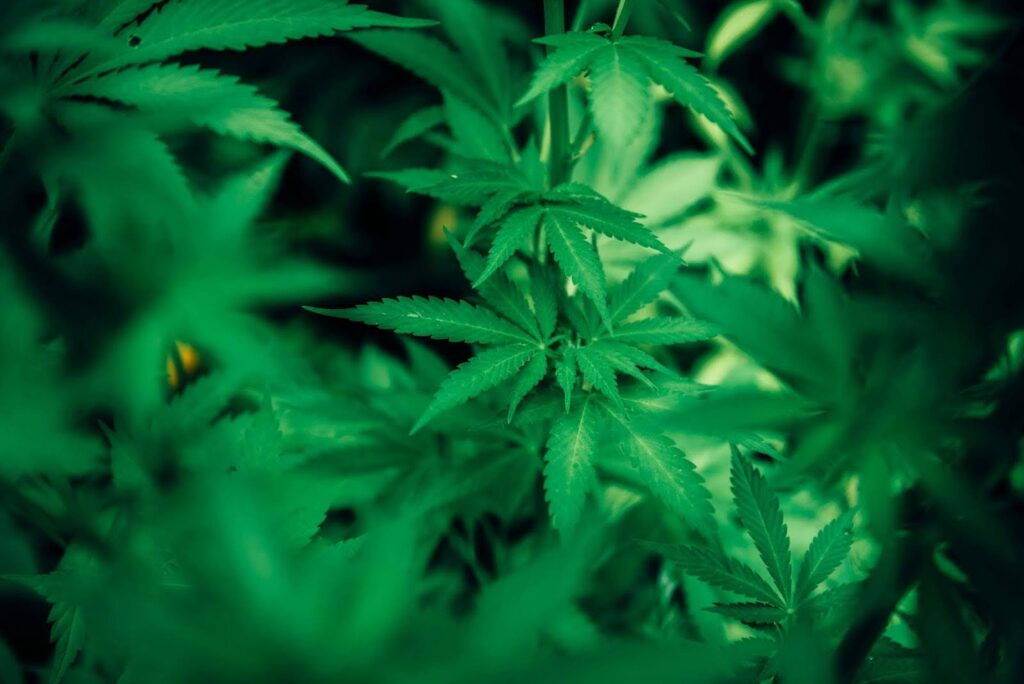
Tools and Resources for VPD Measurement In Cannabis
You do not have to make all these calculations manually. There are modern tools and resources that you can use to measure VPD perfectly even for beginners. Here are some of the most effective tools and techniques you can use:
- Online VPD Calculators and Apps: Many apps and online platforms allow you to input temperature and humidity data to calculate VPD instantly. These tools simplify the process, reducing the need for manual calculations and helping you save time. Some advanced apps even provide growth-stage-specific recommendations.
- VPD Charts and Tables: Pre-calculated charts and tables are excellent quick reference resources. They enable you to match temperature and humidity readings to find the corresponding VPD values. These resources are especially useful in controlled environments where conditions remain stable.
- Key Measuring Instruments:
- Hygrometers: Measure relative humidity with high precision to ensure accurate VPD calculations.
- Thermometers: Air temperature must be measured with dependable thermometers. Digital ones are usually faster and more accurate.
- IR Thermometers: These are essential when measuring the leaf temperature, especially with a large setup where direct measurements on the leaves are difficult.
- Environmental Monitoring Systems: Advanced systems can integrate temperature, humidity, and leaf temperature monitoring to calculate VPD automatically. These tools are perfect for large-scale growers or greenhouses and provide real-time updates and alerts. PlanaCan helps by offering a comprehensive platform that simplifies VPD management, allowing growers to optimize conditions for healthier, more efficient plant growth.
- Data Loggers: These devices record and store environmental data over time so you can monitor trends and make proactive adjustments. You can make more informed decisions about your growing environment by identifying daily or seasonal fluctuations.
- Thermal Imaging Cameras: Large setups can utilize thermal cameras to present an overview of the plant canopy temperature distribution. This guides where improvements are needed to level out the VPD better.
So, how do you manage VPD in indoor setups or greenhouses? Let us discuss how to do that.
Troubleshooting Common VPD Issues In Cannabis
VPD-related challenges can arise from temperature, humidity fluctuations, or environmental factors like seasonal changes or equipment issues. Here’s how to address them:
- High VPD: If the air is too dry or the temperature is high, increase humidity with a humidifier or water trays and lower temperature with AC or ventilation. Avoid direct heat from lights.
- Low VPD: Excessive humidity or low temperature requires better airflow, dehumidifiers, or slight heating to balance VPD levels.
- Maintaining Balance: Regularly monitor VPD, use automated systems for real-time alerts, and adjust conditions to maintain stable levels.
Managing VPD in Controlled Environments
Effectively managing VPD in greenhouses or indoor setups involves controlling temperature, humidity, and airflow. This promotes plant health, maximizes yields, and reduces stress-related issues. Here are key strategies:
- Temperature and Humidity: Use humidifiers or dehumidifiers to maintain optimal VPD and adjust heating or cooling systems for consistent conditions.
- Ventilation and Airflow: Proper airflow avoids stagnant air pockets, ensuring even distribution and maintaining VPD balance.
- Environmental Control Systems: Advanced systems automate VPD management, offering real-time monitoring and remote adjustments via mobile apps.
- Sealing and Insulation: Seal crevices and insulates to stabilize temperature and humidity, preventing VPD imbalances.
- Data Tracking and Analysis: Monitor and log environmental data to analyze trends, identify inefficiencies, and improve VPD management over time.
These strategies will help maintain an optimal plant growth environment, improving yields and reducing the risk of stress or disease.
Struggling to keep up with cannabis growth? PlanaCan’s interactive calendar integrates with environmental monitoring to log data, analyze trends, and optimize VPD management. With graphs and charts to track grow room performance, you can plan yields, manage tasks, and adjust schedules—all in one place.
Now, let us understand how to troubleshoot common VPD issues in your cannabis plant.
Conclusion
Vapor Pressure Deficit (VPD) is one of the most important plant health and growth metrics. Once you understand its importance, measure it, and manage it properly, you can create the perfect environment for your plants to thrive. Use the tools and strategies outlined here to optimize VPD at every growth stage and watch your plants reach their full potential. With the right approach, managing VPD doesn’t have to be complicated—it can be the secret weapon in your gardening success.
PlanaCan enhances cultivation precision by streamlining processes and simplifying task management. PlanaCan can automatically schedule each activity from planting to harvest using customizable templates for particular strains or harvest cycles. It allows growers to plan and modify daily activities to avoid missing any activities.
By integrating VPD knowledge with highly advanced tools, such as PlanaCan, cannabis growers can maximize their yield while managing the crops precisely and easily.
Schedule a free call today to learn how PlanaCan can transform your cultivation process and set you up for success.

